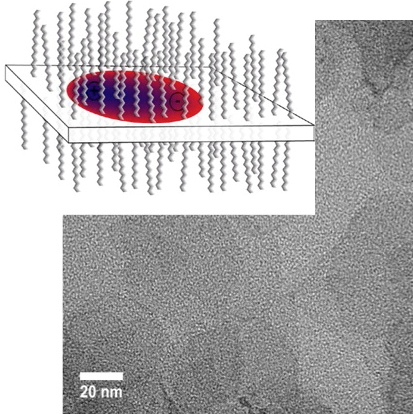Time-resolved measurements show colloidal nanoplatelets act like quantum wells

The relaxation of high-energy carriers (electrons and holes) in colloidal nanoplatelets have been measured by researchers in the Nanophotonics Group at the Center for Nanoscale Materials, working with colleagues at the University of Chicago. The measurements show that the carriers behave like carriers in quantum wells. Quantum wells have found widespread application in optoelectronics, and the new results suggest that colloidal nanoplatelets should find similar applications, with the added advantage that they can be produced at low cost and in large quantities.
Quantum wells are thin semiconductor layers in which charge carriers are confined in one dimension but are free to move in the other two dimensions. Such confinement means that these structures have tuneable optical bandgaps and can strongly absorb and emit light, which makes them good materials for optical modulators and semiconductor lasers. Until recently, quantum wells could be produced only by using expensive crystal-growth techniques such as molecular beam epitaxy and metal-organic vapor-phase epitaxy. Recently, however, methods have been developed to chemically synthesize thin, flat, semiconductor nanocrystals in solution. These "nanoplatelets" are only a few atomic layers thick but tens to hundreds of nanometers across. Charge carriers in these structures should therefore behave as they would in a quantum well. Measurements of optical absorption and emission from nanoplatelets have indicated that this is indeed the case, but evidence has been indirect, and results from different groups have disagreed with one another quantitatively.
The new experiments use time- and frequency-resolved photoluminescence measurements to monitor how high-energy charge carriers relax in the nanoplatelets. The observed relaxation was consistent with quantum well behavior, and qualitatively different from what would be expected for a quantum dot, where carriers are confined in all three dimensions. Moreover, the relaxation is rapid, occurring in less than 50 picoseconds. This means that the nanoplatelets should serve well as the active material in optical modulators and in semiconductor lasers.
More information: M.Pelton, S. Ithurria, R.D. Schaller, D.S. Dolzhnikov, and D.V. Talapin, "Carrier cooling in colloidal quantum wells," Nano Lett. ASAP (2012). DOI: 10.1021/nl302986y
Journal information: Nano Letters
Provided by Argonne National Laboratory



















